Overview
When selecting a commercial bathroom sink, several key considerations must be taken into account:
- Material selection
- Design and style
- Adherence to ADA standards
- Evaluation of brand reputation
These factors are not merely preferences; they are essential for ensuring durability, functionality, and aesthetic appeal. In high-traffic environments such as hotels and restaurants, these considerations significantly enhance the user experience. Furthermore, a well-chosen sink can contribute to the overall ambiance and efficiency of the space, making it a critical decision for any establishment.
Introduction
Selecting the right commercial bathroom sink is a pivotal decision that can significantly influence the overall restroom experience in high-traffic environments. This choice is not merely about aesthetics; it encompasses a myriad of options that facility managers and architects must navigate. Understanding essential factors—from design and materials to compliance with ADA standards—empowers decision-makers to make informed choices that enhance both functionality and aesthetics.
Furthermore, with the increasing emphasis on sustainability, one must consider how the selected sink aligns with modern business demands and environmental goals. This article delves into ten key considerations that will guide the selection process, ensuring that every decision made is both practical and impactful.
The Splash Lab: Premium Commercial Bathroom Sinks for Enhanced Aesthetics and Functionality
The Splash Lab excels in creating high-quality commercial bathroom sinks that seamlessly blend aesthetics with practicality. Their meticulously designed products elevate the restroom experience, making them particularly suitable for high-traffic environments such as hotels, restaurants, and office buildings, especially when featuring a commercial bathroom sink. Furthermore, by emphasizing innovative design and eco-friendly materials, The Splash Lab ensures that each basin not only captivates visually but also delivers exceptional functionality, meeting the demands of modern business settings.

Accessibility: Ensuring Compliance with ADA Standards for All Users
When selecting a commercial bathroom sink, it is imperative to adhere to the Americans with Disabilities Act (ADA) standards. This encompasses critical considerations such as:
- Basin height
- Knee clearance
- Faucet accessibility
When installing a commercial bathroom sink, it should be mounted no higher than 34 inches from the floor, ensuring at least 27 inches of knee clearance underneath. By following these guidelines, facilities can create an inclusive environment that accommodates all users, ultimately enhancing the overall restroom experience.
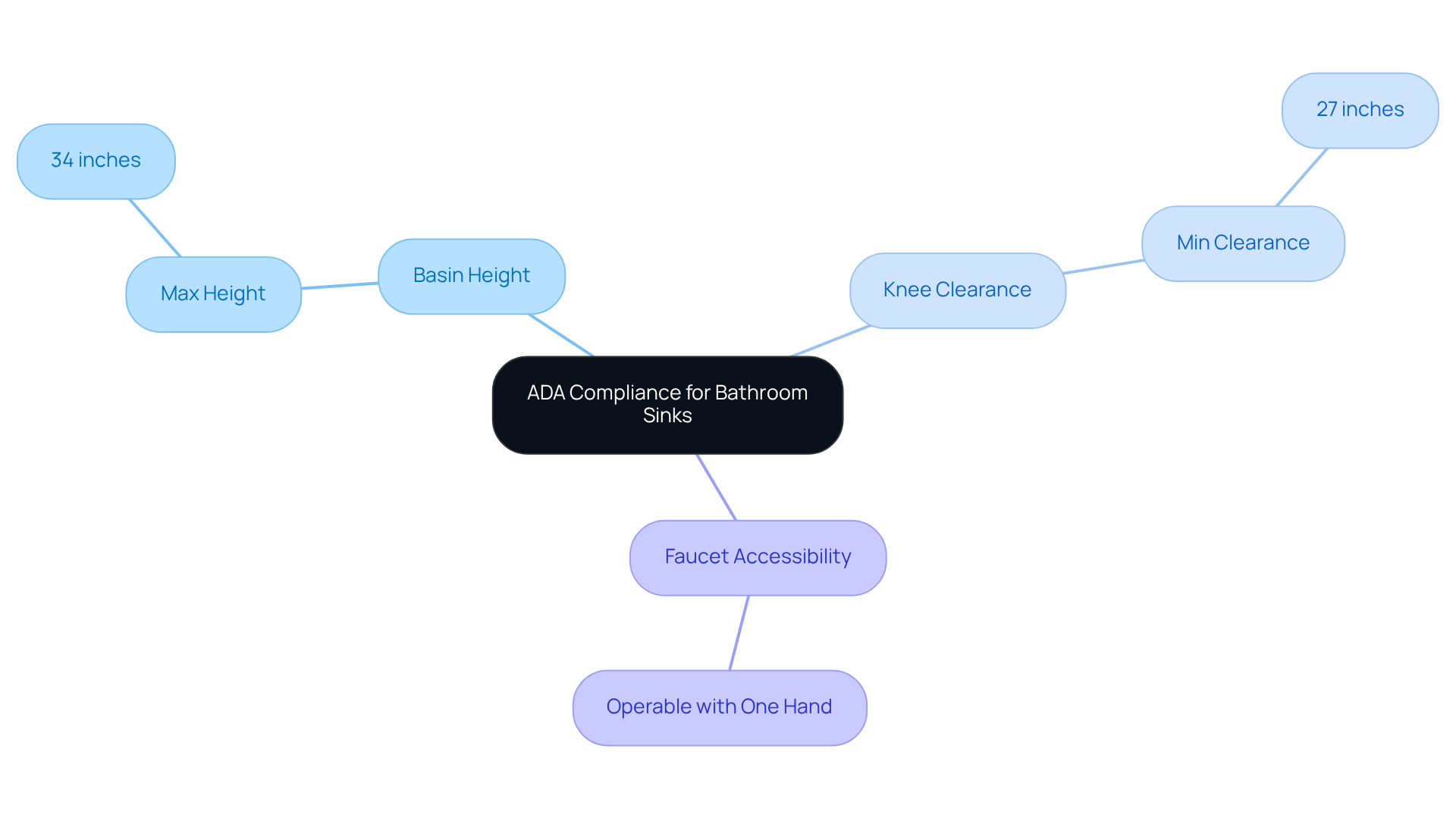
Material Selection: Choosing Durable and Easy-to-Maintain Sink Materials
Selecting the appropriate material for a commercial bathroom sink is essential for guaranteeing durability and ease of upkeep. Stainless steel stands out as a favored option due to its exceptional resistance to corrosion, scratches, and stains. With a standard gauge between 16 and 18, high-quality stainless steel basins not only minimize noise but also avert dents, rendering them perfect for high-traffic settings. Furthermore, the durability of stainless steel is attributed to a protective layer of chromium oxide, which enhances its longevity and performance.
In addition to stainless steel, other materials such as solid surface and porcelain present unique advantages. Solid surface basins offer seamless designs that are easy to clean, while porcelain provides a classic aesthetic. However, porcelain requires more frequent deep cleaning to prevent the buildup of grease and soap scum, making it less maintenance-friendly in busy settings.
When choosing basin materials, it is essential to consider the restroom's usage frequency and specific cleaning requirements. For example, stainless steel basins are advised for settings with harsh chemicals, as Grade 316 stainless steel is especially appropriate for such circumstances. Regular upkeep, including weekly cleaning with gentle detergents, is essential to maintain the fixture's appearance and functionality. By comprehending the advantages and upkeep requirements of different materials, architects and facility managers can make knowledgeable choices that enhance the durability and functionality of commercial bathroom sinks.
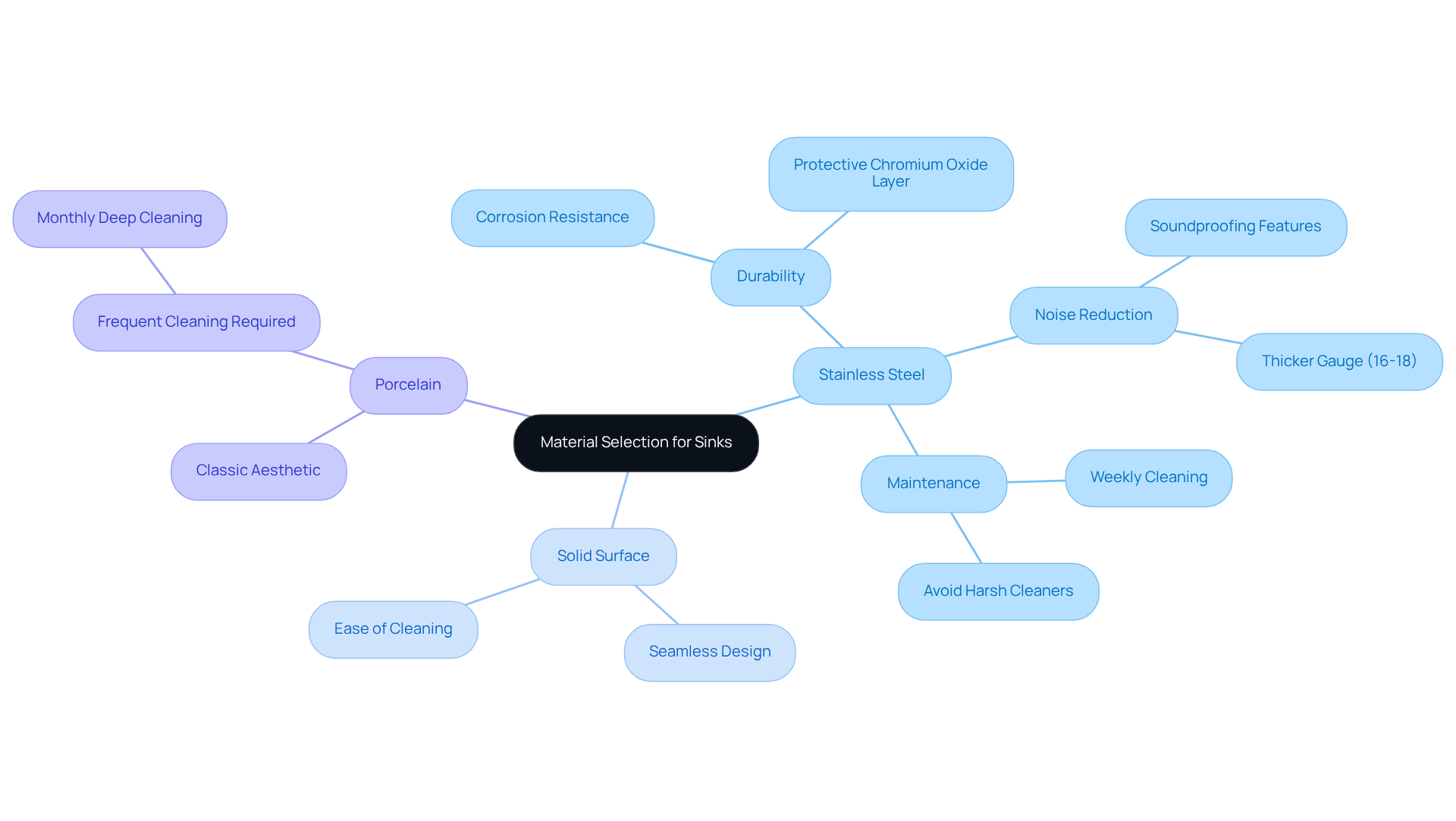
Design and Style: Aligning Sink Aesthetics with Overall Restroom Theme
Choosing a commercial bathroom sink requires careful consideration of its style in relation to the overall bathroom theme. Whether you aspire to achieve a sleek, modern minimalist aesthetic or a more traditional ambiance, the sink must seamlessly integrate with these elements. A wide variety of options for a commercial bathroom sink is available, ranging from modern designs that exude sophistication to traditional creations that evoke timeless elegance, providing the flexibility necessary to create a cohesive and inviting bathroom atmosphere.
Thoughtful selections not only enhance visual appeal but also significantly improve the user experience, transforming the bathroom into a more enjoyable space. A cohesive bathroom design is paramount; it establishes an environment that feels intentional and meticulously planned, ultimately elevating user satisfaction and comfort.
As Brent Otsuka, Manager of Interior Design at Fentress Architects, articulates, 'The Splash Lab has well crafted and beautifully designed products,' highlighting the critical role of quality craftsmanship in achieving a holistically designed restroom.
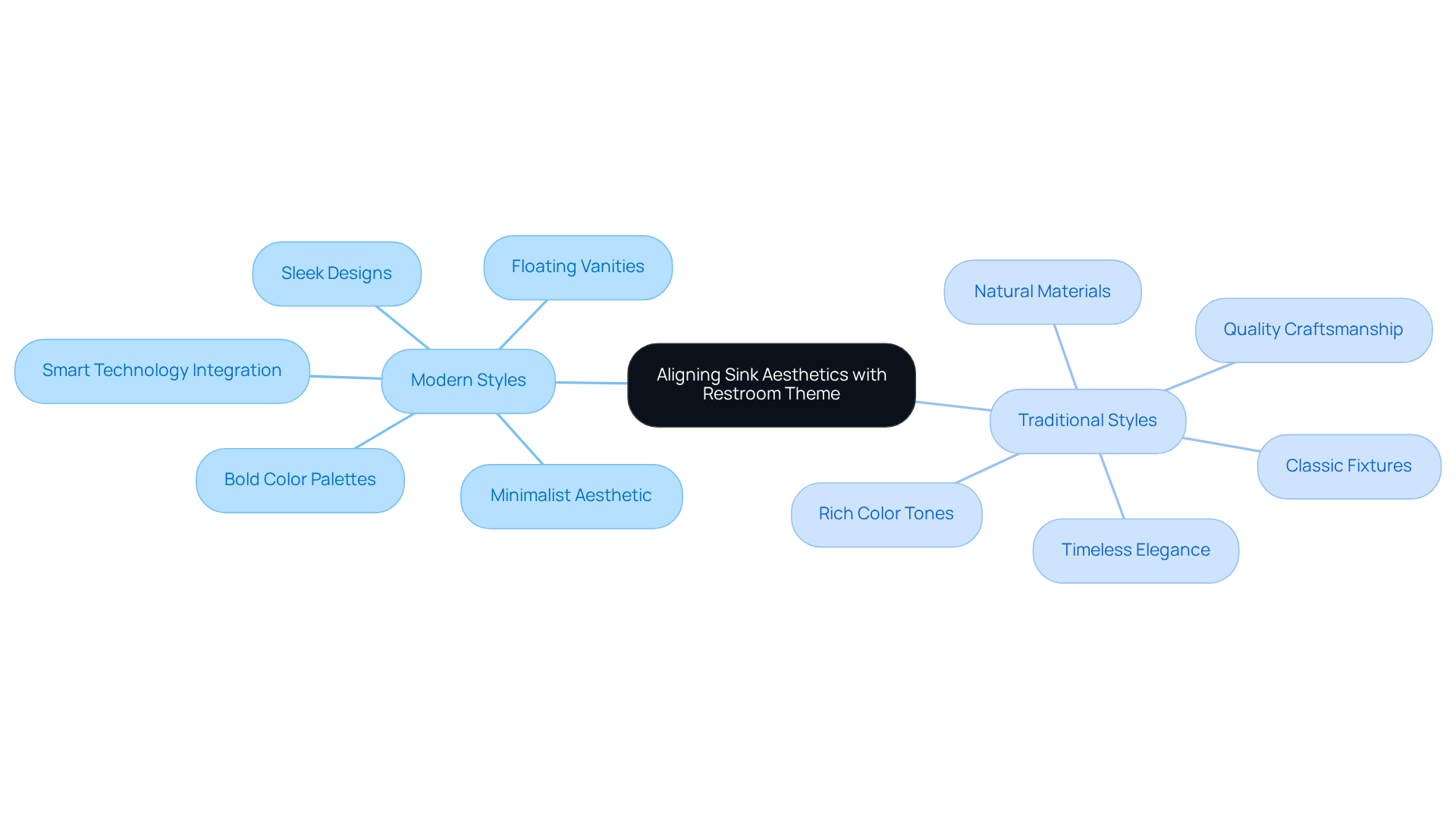
Quality Assurance: Evaluating Sink Durability and Performance Standards
Ensuring the durability and performance of the commercial bathroom sink is crucial for long-term satisfaction and functionality. Opt for basins crafted from high-gauge stainless steel or certified solid surface materials, both recognized for their exceptional durability and ability to withstand heavy use. Notably, stainless steel basins are less prone to chipping or cracking compared to ceramic or cast iron alternatives, establishing them as a reliable choice for high-traffic environments. Warranties significantly influence this decision-making process; they not only reflect the manufacturer's confidence in their product but also provide essential peace of mind regarding potential claims. Statistics reveal that a substantial percentage of warranty claims arise from material failure or inadequate performance, underscoring the necessity for thorough evaluation prior to purchase.
Performance certifications serve as vital indicators of quality, ensuring that fixtures comply with industry standards for durability and hygiene. For instance, basins that achieve Watermark certification demonstrate adherence to safety and quality standards, which is particularly crucial in high-traffic areas. The fixed water basin segment generated revenue of approximately USD 7.7 billion in 2023, highlighting the market's significance and the increasing demand for high-quality fixtures driven by rising disposable income. Investing in premium fixtures, such as a commercial bathroom sink, not only mitigates upkeep expenses but also enhances the overall restroom experience, making them a prudent choice for business environments. As a final recommendation, architects and designers should prioritize selecting basins that meet both aesthetic and functional requirements, ensuring optimal performance in their projects.
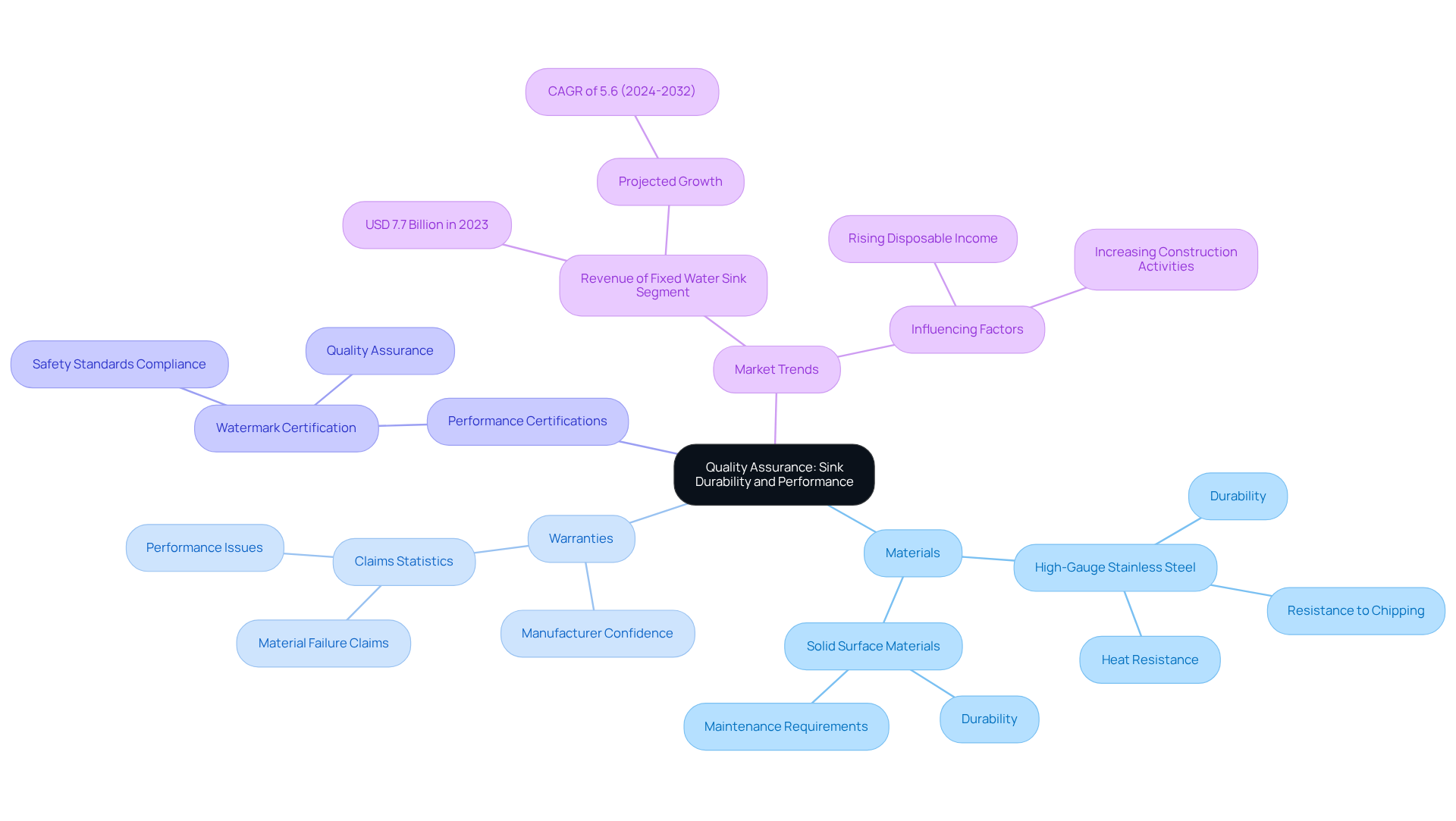
Cost-Effectiveness: Balancing Budget with Quality and Functionality
Choosing a commercial bathroom sink necessitates a careful balance between budget constraints and the imperative for quality and functionality. While the allure of the least expensive option may be tempting, investing in higher-quality sinks typically results in reduced maintenance costs and extended lifespans.
It is crucial to consider the total cost of ownership, which encompasses installation, maintenance, and potential replacement expenses. For example:
- Touchless electronic controls can diminish water usage by up to 80%
- Electronic flush valves generally cut water use by 50%, leading to substantial savings over time.
Furthermore, bathroom components usually possess a service life of 20 years or longer, underscoring the importance of evaluating long-term sustainability alongside initial costs. Notably, 80% of Americans believe public toilets should feature touchless fixtures, reflecting a growing demand for modern sanitation solutions.
By prioritizing quality, facility managers can ensure that their restroom environments remain functional and aesthetically pleasing, ultimately enhancing user satisfaction and reducing overall operational costs.
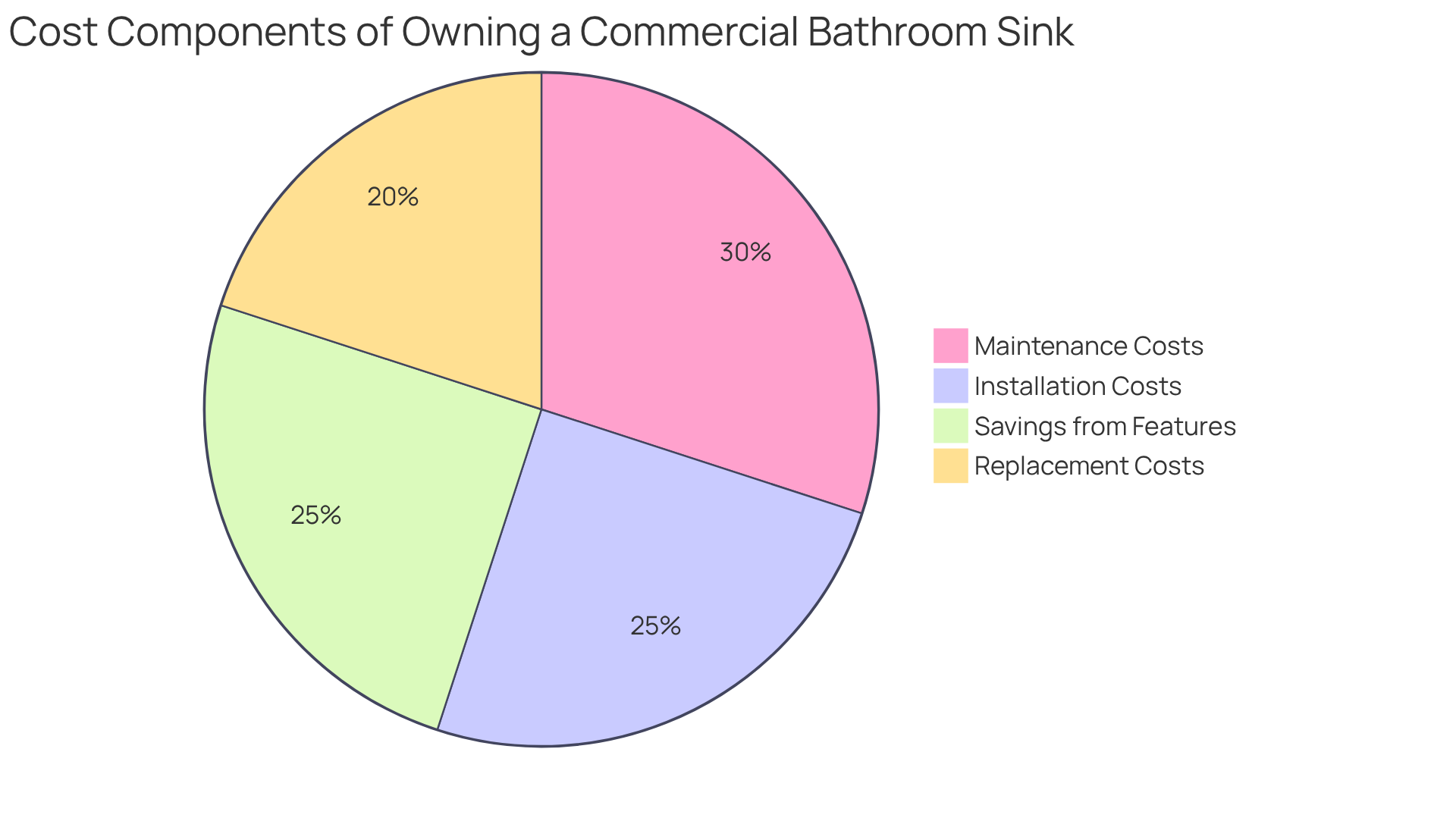
Installation Requirements: Understanding Sink Setup and Maintenance Needs
Understanding the installation requirements for a commercial bathroom sink is crucial for ensuring functionality and durability. Key plumbing considerations involve:
- Assessing the existing plumbing setup, including checking the shutoff valves to confirm they are operational before installation begins.
- Ensuring adequate space for the basin; a basin that is too small for the countertop can lead to gaps or instability.
- Considering the number of openings required for faucets and accessories, as most basins come with three holes for the faucet and one for accessories.
Employing proper installation techniques is vital to prevent leaks and water damage. For example, using plumber's putty or a rubber gasket to create a watertight seal when connecting the drain is recommended. Sealing the edges of the basin with silicone caulk not only enhances stability but also prevents water from seeping underneath. Statistics indicate that improper installation can lead to significant issues; deteriorating particleboard will not provide a sturdy foundation for the clips that secure the basin to the countertop.
Successful basin installations can be observed in projects such as Padel Haus in New York and Lacuna Space in California, where The Splash Lab delivered customized restroom solutions that emphasized both aesthetic appeal and practical functionality. These case studies underscore the importance of customization and quality craftsmanship in achieving optimal results, reflecting the company's commitment to sustainability.
Incorporating best practices from plumbing professionals can further enhance installation success. For instance, Family Handyman advises, "Avoid drips and disasters by using a silicone caulk instead" to ensure a proper seal. Ensuring that connections are tightened correctly and testing for leaks after installation are critical steps. By adhering to these principles, architects and designers can ensure that their selected basins not only meet aesthetic standards but also function efficiently in high-traffic environments.

Brand Reputation: Choosing Trusted Manufacturers for Commercial Sinks
The manufacturer's reputation is paramount when selecting a commercial bathroom sink. Established brands are recognized for their consistent production of high-quality products and exceptional customer service. Researching customer reviews and industry ratings can provide valuable insights into the reliability of various manufacturers.
Furthermore, The Splash Lab distinguishes itself through its dedication to quality craftsmanship and comprehensive facility layout. Brent Otsuka, Manager of Interior Design at Fentress Architects, notes, "The Splash Lab has well crafted and beautifully created products." I consistently approach them first to create a comprehensively designed bathroom.
Opting for a reputable brand not only ensures a product that meets high standards of quality and performance but also offers peace of mind, knowing that the investment is sound and supported by a history of customer satisfaction.
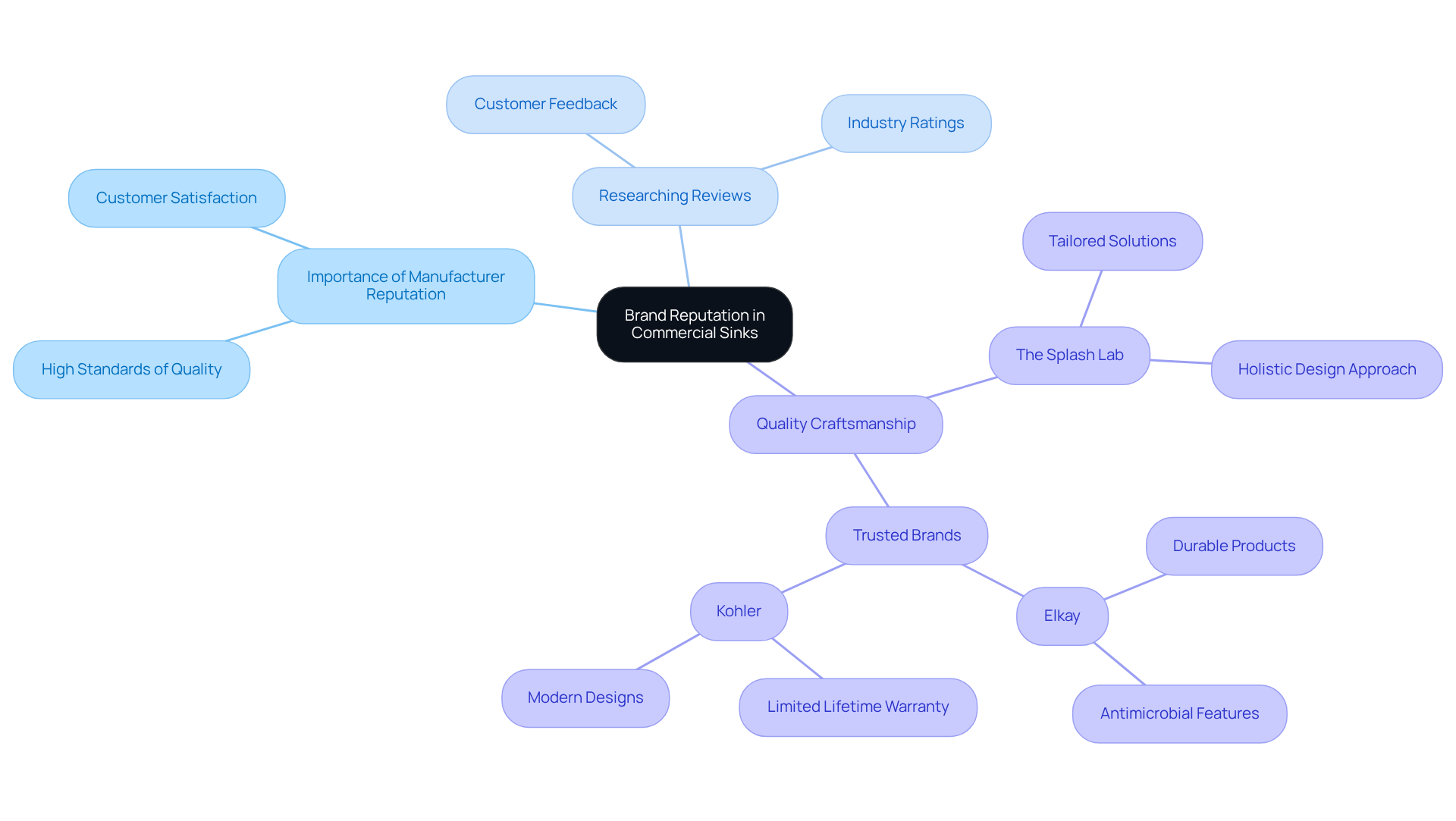
Sustainability: Selecting Eco-Friendly Sink Options for Commercial Use
In today's environmentally conscious market, selecting eco-friendly commercial bathroom sink alternatives is crucial for restroom design. It is imperative to seek basins made from sustainable materials, such as recycled stainless steel or low-impact solid surfaces.
The global basin bowls market is anticipated to expand significantly, projected to reach approximately USD 5.7 billion by 2033, with a compound annual growth rate (CAGR) of 4.4% from 2023 to 2033.
Furthermore, consider products that foster water conservation, such as commercial bathroom sinks that are engineered for efficient water flow. By prioritizing sustainability, companies can enhance their brand reputation and champion environmental responsibility while effectively meeting the practical needs of their facilities.
The Splash Lab's case studies, including those executed for Padel Haus in New York and Lacuna Space in California, exemplify a commitment to innovative and sustainable restroom solutions that resonate with these trends.
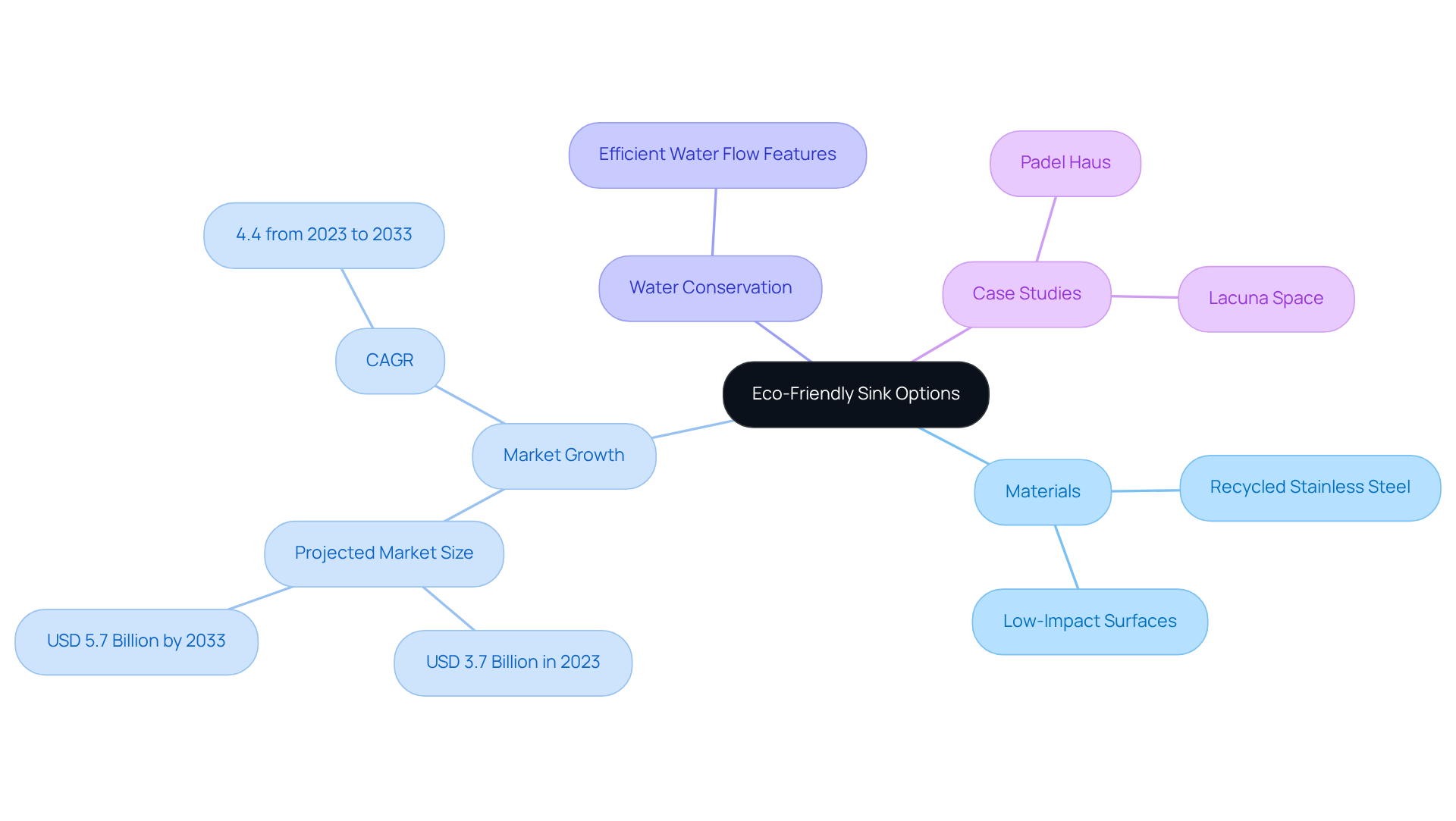
User Feedback: Leveraging Reviews to Inform Sink Selection Decisions
When selecting a commercial bathroom sink, leveraging user feedback is essential. Online evaluations and endorsements offer valuable insights into the performance, durability, and maintenance of various basin options. Consumer behavior analysts emphasize that reviews have a profound influence on purchasing decisions; many buyers depend on the experiences of others to inform their choices. Common themes in feedback frequently encompass:
- Ease of installation
- Cleaning requirements
- Overall satisfaction
All of which can significantly sway the decision-making process. For example, Brent Otsuka, Manager of Interior Design at Fentress Architects, asserts, "The Splash Lab has well crafted and beautifully designed products. I consistently approach them first to create a comprehensively designed bathroom." This testimonial underscores the importance of quality craftsmanship and holistic solutions in restroom design.
Furthermore, a popular TikTok account focused on commercial bathroom sink reviews has amassed over 712,000 followers, highlighting the public's strong interest in the quality and aesthetics of bathroom fixtures. Additionally, case studies from The Splash Lab, showcasing projects for Padel Haus and Lacuna Space, illustrate how user feedback can shape choices in hospitality and workspace environments.
By considering the shared experiences of users, architects and designers can make informed decisions that align with contemporary aesthetic trends and practical needs, ultimately enhancing the restroom experience. To effectively harness user feedback, architects should routinely review online testimonials, engage with customer comments, and integrate insights into their design processes.
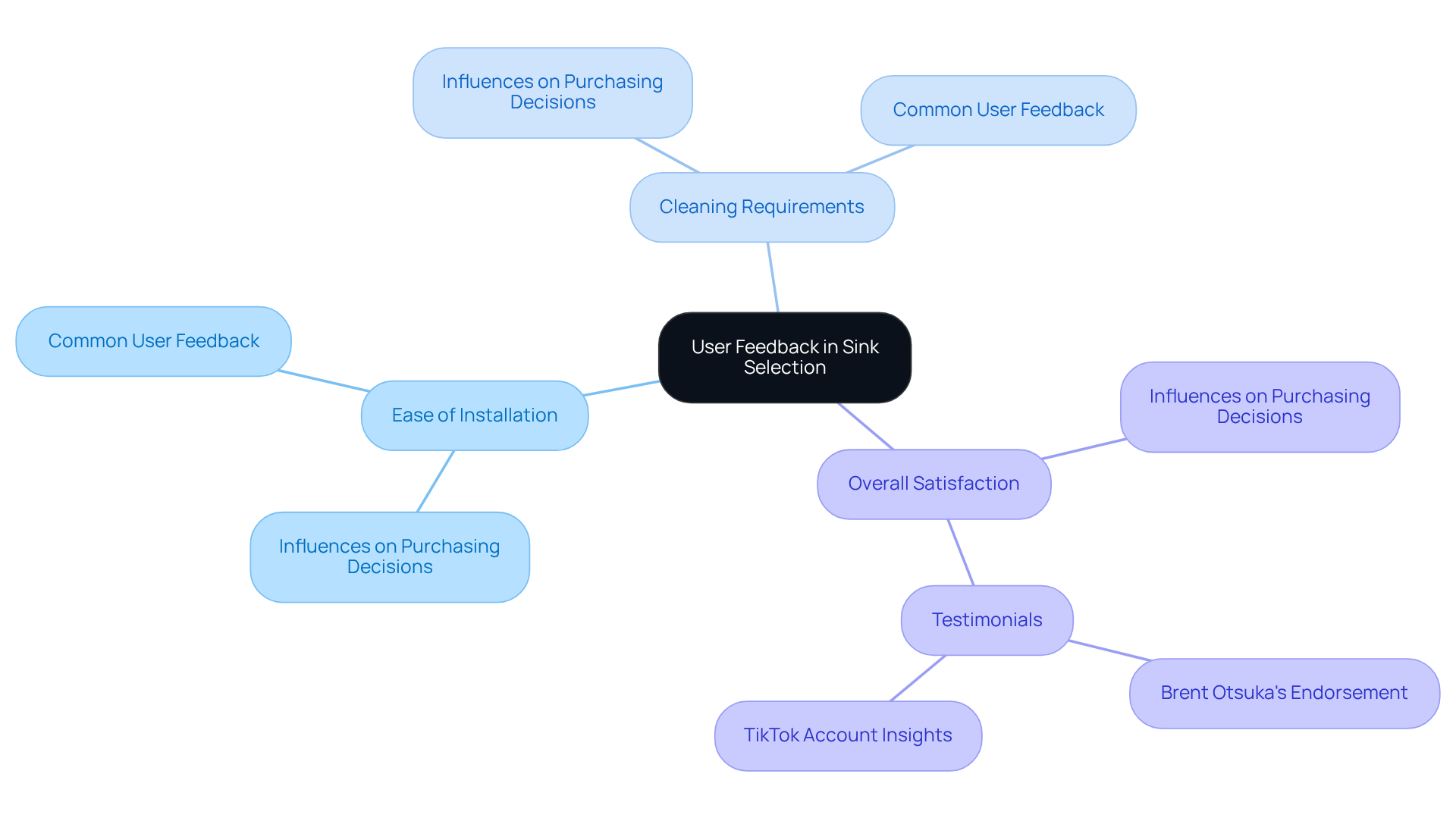
Conclusion
Selecting the right commercial bathroom sink is a multifaceted decision that extends beyond mere aesthetics. It encompasses various critical factors, including:
- Compliance with ADA standards
- Material durability
- Design coherence
- Cost-effectiveness
Each consideration plays a vital role in ensuring that the sink not only meets the functional demands of high-traffic environments but also enhances the overall restroom experience for users.
Throughout the article, essential insights were provided on the importance of choosing sinks made from durable materials like stainless steel, which withstands the rigors of frequent use while minimizing maintenance. The significance of aligning sink design with the overall restroom theme was emphasized, as this contributes to a cohesive and inviting atmosphere. Furthermore, the article highlighted the necessity of evaluating the reputation of manufacturers, ensuring that quality and performance standards are met, while also advocating for sustainability through eco-friendly options.
In conclusion, the process of selecting a commercial bathroom sink should be approached with careful consideration of both practical and aesthetic factors. By prioritizing quality, functionality, and user feedback, architects and facility managers can create a restroom environment that is not only visually appealing but also highly efficient. Embracing these key considerations will lead to informed decisions that enhance user satisfaction, reduce operational costs, and promote a sustainable future in restroom design.
Frequently Asked Questions
What is The Splash Lab known for?
The Splash Lab specializes in creating high-quality commercial bathroom sinks that blend aesthetics with practicality, enhancing the restroom experience, particularly in high-traffic environments like hotels, restaurants, and office buildings.
Why is it important to comply with ADA standards when selecting a commercial bathroom sink?
Compliance with ADA standards is crucial to ensure accessibility for all users. This includes considerations such as basin height, knee clearance, and faucet accessibility, which help create an inclusive environment.
What are the ADA guidelines for mounting a commercial bathroom sink?
A commercial bathroom sink should be mounted no higher than 34 inches from the floor, with at least 27 inches of knee clearance underneath to accommodate users effectively.
What materials are recommended for commercial bathroom sinks and why?
Stainless steel is highly recommended due to its corrosion, scratch, and stain resistance. It minimizes noise and prevents dents, making it ideal for high-traffic areas. Other materials like solid surface and porcelain also have benefits, but porcelain requires more frequent deep cleaning.
What is the significance of the protective layer in stainless steel sinks?
The protective layer of chromium oxide in stainless steel enhances its longevity and performance, making it a durable choice for commercial bathroom sinks.
How should different sink materials be maintained?
Stainless steel basins require regular upkeep, including weekly cleaning with gentle detergents. Solid surface basins are easy to clean due to their seamless designs, while porcelain needs more frequent deep cleaning to avoid grease and soap scum buildup.
What should architects and facility managers consider when choosing sink materials?
They should consider the restroom's usage frequency and specific cleaning requirements to select materials that enhance durability and functionality, ensuring that the sinks meet the demands of the environment.




